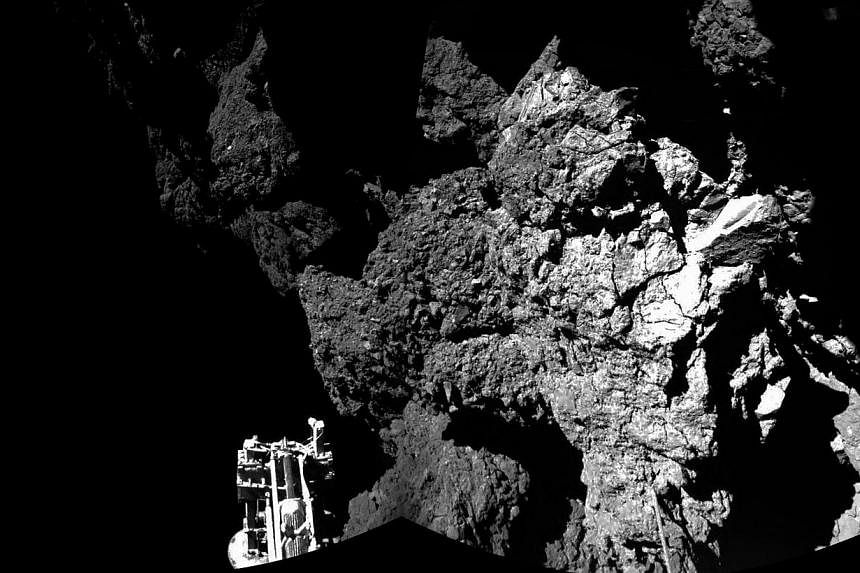Paris - Europe's science probe Philae sent home a treasure trove of data from a comet heading towards the Sun before falling silent as its power ran out, mission control said yesterday.
Crowning a historic feat, the robot lab streamed data from its experiments back to its mother ship Rosetta in the final hours before its battery ran down.
The data from the 1.3 billion euro (S$2.1 billion) mission included the outcome of an eagerly-waited chemistry test of a sample drilled from the comet's icy and dusty surface, scientists said.
"Rosetta's lander has completed its primary science mission," the European Space Agency (ESA) said.
Lacking power, its instruments and most of its systems went into standby mode after three days of non-stop work, sending back data that will keep scientists busy for years.
"The data collected by Philae and Rosetta is set to make this mission a game-changer in cometary science," said Dr Matt Taylor, the Rosetta project scientist.
Philae had landed in a dark shadow after a bouncy triple touchdown on Wednesday. It did not get enough sunlight to recharge its battery sufficiently to extend its mission beyond its initial 60-hour work programme.
"My #lifeonacomet has just begun," said an official tweet in the name of the washing machine-sized lander perched on comet 67P/Churyumov- Gerasimenko, before concluding with a restful "zzzzz".
"S'ok Philae, I've got it from here for now. Rest well...," said a response tweeted on behalf of Rosetta.
But mission engineers have not ruled out making contact with the lander in the coming months as the "67P" comet moves closer to the Sun.
Conceived more than 20 years ago, the Rosetta mission aims at shedding light on the origins of the solar system 4.6 billion years ago, and maybe even life on Earth.
A theory gaining ground in astrophysics is that the fledgling Earth was pounded by these bodies of cosmic ice and carbon-rich dust, seeding our planet with the basics to start life.
Rosetta and its payload travelled more than 6 billion km, racing around the inner solar system before they caught up with the comet in August.
Weighing 100kg on Earth, Philae has a mass of just 1g - less than a feather - on the low-gravity comet. That meant just a jolt could have caused it to drift off into space.
And lack of sunlight for its solar panels meant it had to survive on a battery with a charge of around 60 hours to carry out its scheduled scientific work.
Stacked against the odds, the scientists resorted to every trick possible to use power miserly and keep it working without causing it to drift away.
The "67P" comet is due to loop around the Sun next year, flaring gas from its head and leaving a spectacular icy trail of ice from water stripped from its surface.
Rosetta will escort it until the comet heads back out towards the depths of the solar system in December next year.
The team's eagerly-awaited first report will be made at a meeting of the American Geophysical Union in San Francisco next month.
AFP

